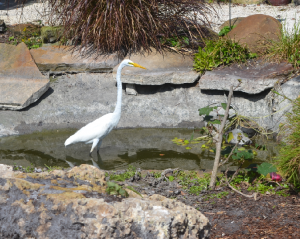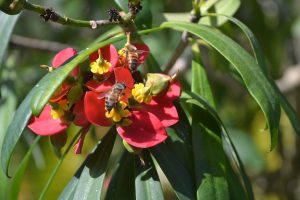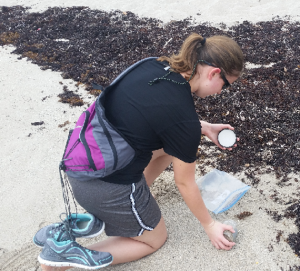As COVID-19 restrictions begin to loosen, but schools remain closed and social distancing recommendations stay in place, there is a need to find new and safe ways to keep kids learning, active, and at ease. Being outside in nature is a great way to accomplish all three of these needs. The outdoors is an unmatched classroom, encourages youth to get moving, and conveys an overall sense of calm and normalcy.
One idea combines outdoor exploration and citizen science. Florida has a diverse and unique bird population with many year-round natives and many migratory species as well. Birding can be a fun way to learn about native species, adaptations, migration, and ecosystem linkages. The Cornell University Ornithology Lab and the National Audubon Society have collaboratively created an amazing and free mobile App called eBird. eBird allows you to watch birds, record sightings, and contribute to bird research and conservation. eBird also contains species identification tools, bird calls, and other helpful tools to help youth correctly identify the birds they find. You can learn more information here: https://ebird.org/home.

Another idea for outdoor learning is to explore the world of pollinators. When you ask most kids and adults to name a pollinator, bees and butterflies are the most common answers. Having youth explore different pollinators in their yards, neighborhoods, or local parks is a great way to get them outside and learning. It is also a chance to introduce them to other, lesser-known pollinators, such as male mosquitoes, male horseflies, moths, and wasps.
A way to expand pollinator knowledge in outdoor activities is to highlight plants that use the wind to pollinate instead of insects. For example, ragweed is a plant we often associate with allergies and this is because this plant release its pollen into the wind. A single ragweed plant can produce up to 1 billion pollen grains, which are taken by the wind and spread through the air. A fun activity for younger youth is to draw some pictures of black and white flowers and put some cheese flavored chips/snacks into a bag. Pretend the cheese snacks are flowers and kids will use there hands as the pollinators. Have the kids reach into the bag and pull out some cheese snacks, keeping the residue on their fingers. They can then touch the pictures of the flowers and apply about how the “pollen” is transferred and how wind and pollinators achieve this as well.

Exploring soil is another fun and active outdoor learning activity. Florida has very diverse soil compositions depending on where you are located and exploring the properties of soil is a fun way to show how soil types affect Florida’s ability to farm and grow food. Within Florida, the majority of our soil is sand. Specifically these soils are dominated by the mineral, quartz, which gives Florida its white sand beaches. Some of Florida’s regions, like the everglades in South Florida, are dominated by organic soils and is peat-based, making it very good for planting and growing. Northern Florida also has a high amount of clay soil. To observe and compare soil, take some old, clear, plastic storage containers and let your kids dig up and collect soil from different areas around their house and neighborhood. Using just a well-lit area, youth will be able to see many different physical variations in the soils they find, and some may even find shells or plant matter. You can expand this activity by planting seeds in the various soil types and seeing which soil enables the plant to grows best.

These are just a few ideas to have some fun and learn with your kids outside. These are stressful times and if we can make learning a bit more relaxing and a bit more fun, everyone will benefit. Do not be afraid to go outside, play, explore, and have fun. Being outside and appreciating nature is a great stress reliever and helps kids see the value of outdoor spaces and the natural world.

 0
0
